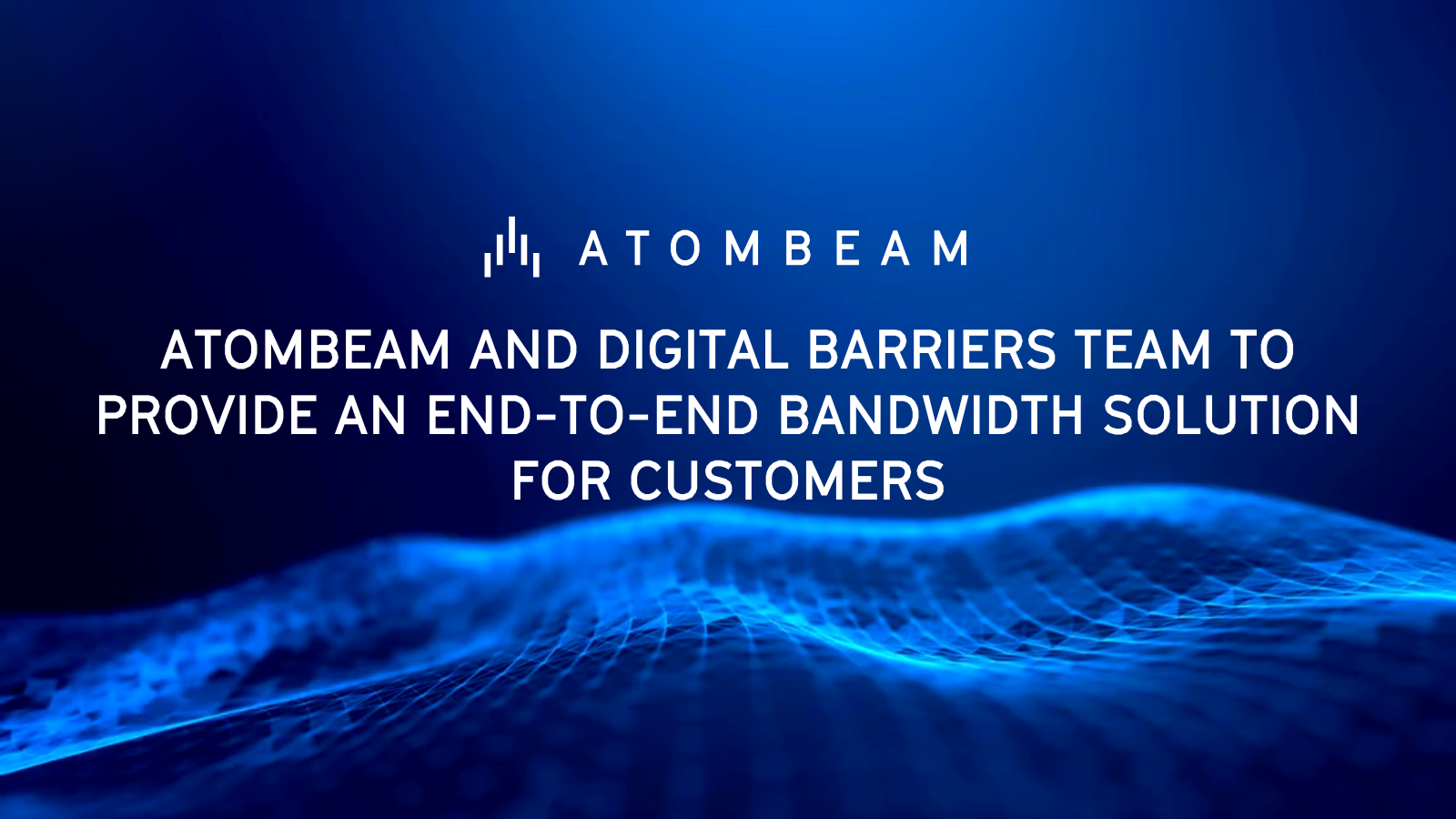
Cutting Data Transmission Costs
In today's data-driven world, businesses generate more data than ever. From healthcare and finance to aerospace and defense, companies across all industries must store and transmit massive amounts of data generated by machines 24 hours per day, every day. As data grows, so does the cost of transmitting it. 90% percent of all of the data in the world was generated in the last two years, and every two years, the volume of data across the world doubles. Machines, from a humble smart light switch to the mighty James Webb Space Telescope, are responsible for a massive, growing share of that data.
That's where AtomBeam’s compaction technology comes in.
AtomBeam’s Compaction and legacy compression algorithms, like the familiar zip, both reduce the size of data files without loss, and can be “reinflated” on command. The difference comes in how this is accomplished. Compression searches in every “message” generated by a machine to find patterns in that one message - but the problem is with machine, or IoT messages, their tiny size: 4 bytes, 10 bytes, 25 bytes are typical for machine files which make them less than .1% of the size of a typical Microsoft Office file. If compression finds a pattern that repeats in the message, it inserts a placeholder to say, “reproduce the pattern in this part of the message again over here”. The problem with tiny little files generated by machines is that they are tiny - good luck finding repeated patterns in those little guys. As a result, almost nobody uses compression on machine data files, unless they are willing to wait a long time and smash enough of them together to make a big enough file for compression to work. Of course, that defeats the purpose of IoT in the first place - who wants to wait a few minutes for your car’s emergency braking system to operate? Nope.
Which brings us to AtomBeam Compaction. Compaction uses technology invented decades after compression first came into use - machine learning and complex mathematics - to perform the search for patterns in data before any live data goes anywhere. Compaction does its heavy work in advance, looking for patterns in thousands, or millions, of little machine data messages, and building “Codebooks” made of the patterns which are each matched to a “Codeword”. A typical match might be a 128 bit long pattern of data that is matched to a three, five or 10 bit Codeword. You can see where this is going.
Codebooks are placed in the gadget that is generating the data, like a car or a sensor, and also where the data goes, usually a data center server. When the gadget generates a file, all that Compaction needs to do is whack it up in the right pattern lengths and send the Codeword matched to that pattern to the destination. When it gets there, the Codeword is “looked up” by Compaction and the matched pattern is added to the rebuilt file. Every pattern is matched, and so every single bit of every single file is reconstructed 100% exactly as it was when it was given birth by the gadget. Kind of like a Star Trek transporter - it is a recipe to build a file. But if you do not have the recipe book, the Codebook, it is a pile of goo. By the way, that pile of goo is the key to the security aspect of Compaction - it would take a big computer a long time to hack into a Codebook. Like a “national effort”. Given there is zero added computation to get that security, you are talking about a pretty spectacular proposition. 4x more data and security in an “ultralight” computing step? Sign me up!
So, where can you use Compaction? Try everywhere. Modern cars send data all over their internal networks, but those networks have limited bandwidth. Remote mining and oil and gas extraction data over satellites. Ships at sea send data constantly. The military generates massive amounts of data that are critical to warfighters, but bandwidth limitations highly constrain their access. Aircraft send and receive data at extremely high rates, but need to send more. The world is becoming more tightly connected all the time, with data flying everywhere, and the need to make it more efficient is vital.
Revolutionizing Aerospace, Defense, and Healthcare Industries
In the aerospace and defense industries, Compaction technology can help companies increase their bandwidth without costly upgrades to their hardware. A military aircraft maker needs more bandwidth for downlink, but upgrading the hardware would cost millions! A downlink refers to data transmission from a satellite, spacecraft, or another remote object to a ground-based receiving station or terminal. AtomBeam’s compaction gives them what they need for a fraction of the cost and adds security.
AtomBeam’s technology can also have significant benefits in the healthcare industry. A big pharmaceutical company can take days to decompress millions of genomes to analyze a tiny part of them for drug research, a task that can be done in seconds by Compaction. A physician can monitor a patient’s vitals from thousands of miles away over limited bandwidth. The potential for medicine is very large.
AtomBeam's compaction technology is the future of data storage and transmission. Join us on StartEngine and invest in the future of business and technology with AtomBeam.









